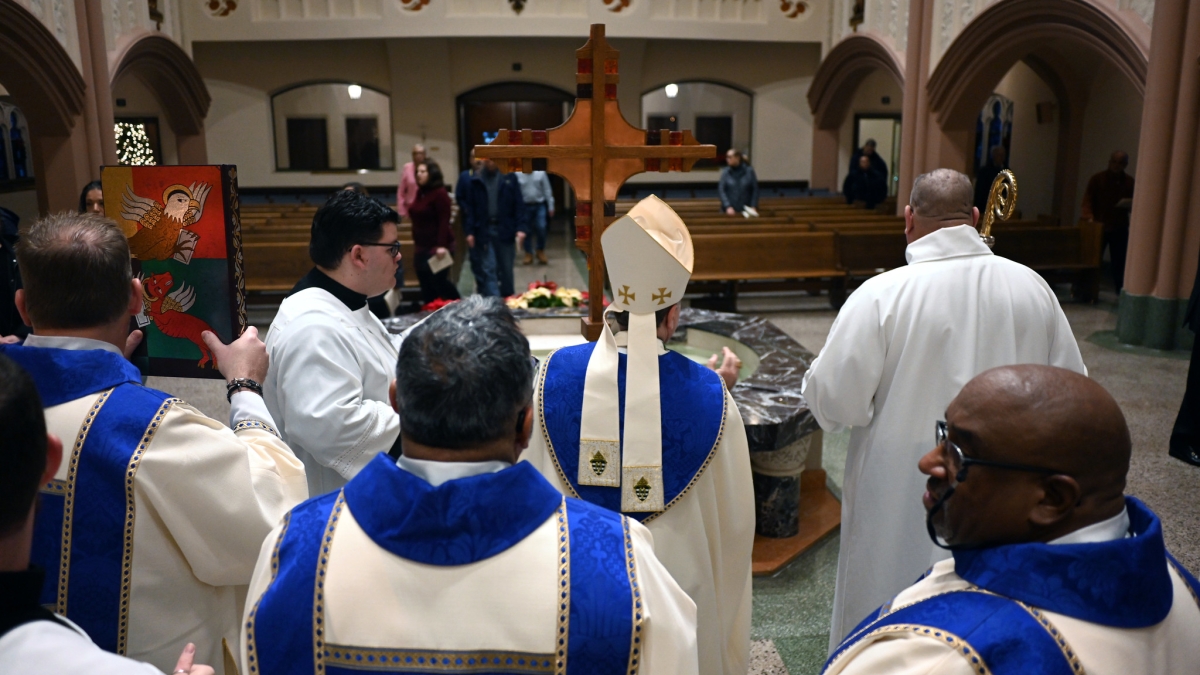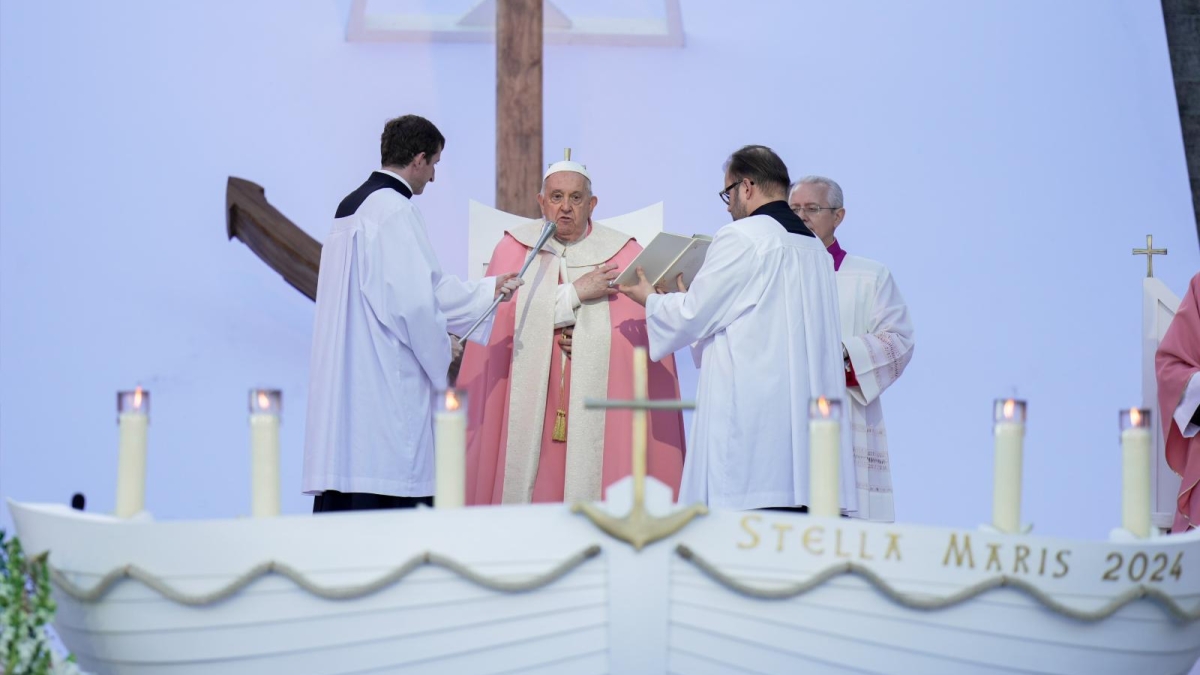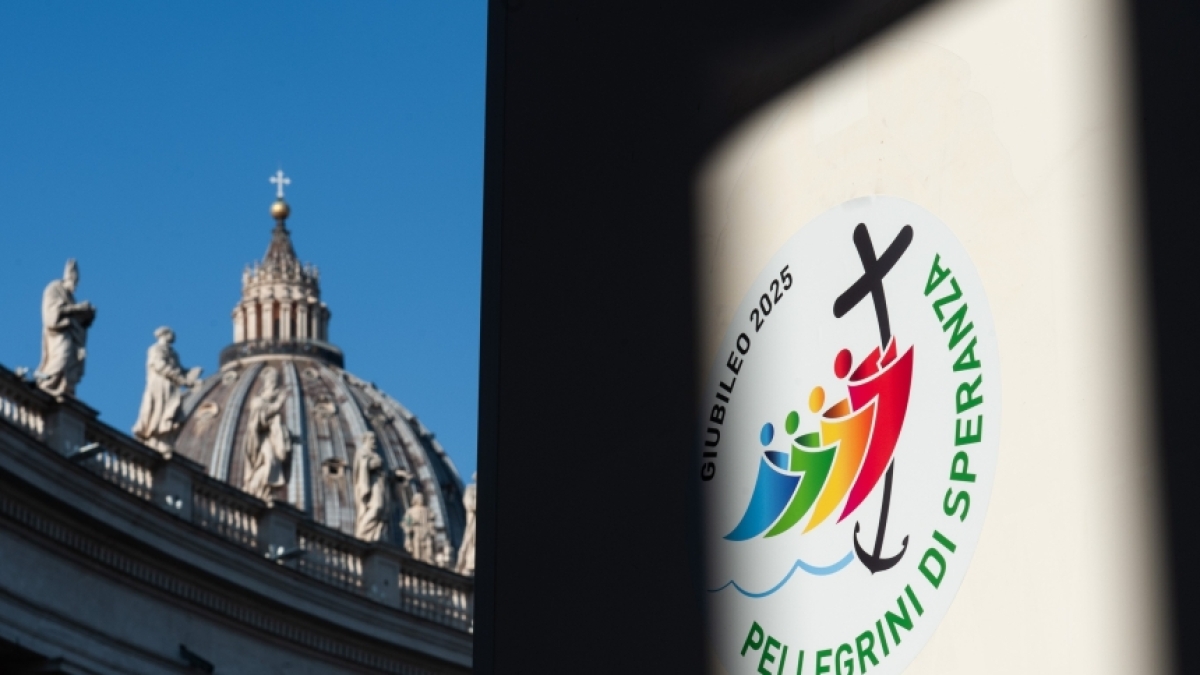Pope Francis declared from December 24, 2024 through January 6, 2026 a Jubilee Year of Hope, a year of favor and mercy from the Lord.
“Jubilee” is the name given to a particular year; the name comes from the instrument used to mark its launch. In this case, the instrument in question is the yobel, the ram's horn, used to proclaim the Day of Atonement (Yom Kippur). This (Jewish) holiday occurs every year, but it takes on special significance when it marks the beginning of a Jubilee year. We can find an early indication of it in the Bible: a Jubilee year was to be marked every 50 years, since this would be an “extra” year, one which would happen every seven weeks of seven years, i.e., every 49 years (cf. Leviticus 25:8-13).
Even though it wasn’t easy to organize, it was intended to be marked as a time to re-establish a proper relationship with God, with one another, and with all of creation, and involved the forgiveness of debts, the return of misappropriated land, and a fallow period for the fields.
In 1300, Pope Boniface VIII called the first Jubilee, also known as a “Holy Year,” since it is a time in which God's holiness transforms us.
The frequency of Holy Years has changed over time: at first, they were celebrated every 100 years; later, in 1343 Pope Clement VI reduced the gap between Jubilees to every 50 years, and in 1470 Pope Paul II made it every 25 years. There have also been “extraordinary” Holy Years: for example, in 1933 Pope Pius XI chose to commemorate the 1900th anniversary of the Redemption, and in 2015 Pope Francis proclaimed the Year of Mercy as an extraordinary jubilee.
The way in which Jubilee Years are marked has also changed through the centuries: originally the Holy Year consisted of a pilgrimage to the Roman Basilicas of St. Peter and St. Paul, later other signs were added, such as the Holy Door. By participating in the Holy Year, one is granted a plenary indulgence.
Characteristics of the Jubilee
- Pilgrimage
-
The jubilee calls for us to set out on a journey and to cross boundaries. When we travel, we do not only change place physically, but we also change ourselves. Hence, it is important to prepare ourselves well, to plan the route, and learn about the destination. In this sense, the Jubilee pilgrimage begins before the start of the journey itself: the starting point is the decision to set out. The etymology of the word “pilgrimage” is quite telling and has undergone little change in meaning over the years. The word comes from the Latin “per ager,” meaning "across the fields," or perhaps from “per eger” meaning “border crossing”: both possible origins point to the distinctive aspect of undertaking a journey.
In the Bible, Abraham is described as a person on a journey: “Go forth from your land, your relatives, and from your father’s house” (Genesis 12:1). With these words Abraham begins his adventure, which ends in the Promised Land, where he is remembered as a “wandering Aramean” (Deuteronomy 26:5). Jesus’ ministry can also be seen as a journey, from Galilee to the Holy City of Jerusalem … “As the time drew near when Jesus would be taken up to heaven, he made up his mind and set out on his way to Jerusalem.” (Luke 9:51). Christ himself calls His disciples to walk this road, and even today Christians are those who follow him and set out after Him.
The journey takes place gradually: there are various routes to choose from and places to discover; it is made up of particular sets of circumstances, moments of catechesis, sacred rites and liturgies. Along the way our traveling companions enrich us with new ways of understanding things and fresh perspectives. Contemplation of creation is also part of the journey and helps us to realize that care for creation “is an essential expression of our faith in God and our obedience to his will” (Pope Francis, Letter for the Jubilee 2025). Pilgrimage is an experience of conversion, of transforming one's very being to conform it to the holiness of God. During the pilgrimage, one also shares in the experience of those who, for various reasons, are forced to leave their homelands to seek a better life for themselves and their family.
- Holy Door
-
From a symbolic viewpoint, the Holy Door takes on a special significance: it is the most powerful sign of the Jubilee, since the ultimate aim of the pilgrim is to pass through it. The opening of the door by the Pope constitutes the official beginning of the Holy Year. Originally, there was only one door, at the Basilica of St. John Lateran, which is the cathedral of the Bishop of Rome. Later, to allow as many pilgrims as possible to take part in the Jubilee experience, the other Roman Basilicas also opened their own holy doors.
In crossing the threshold of the Holy Door, the pilgrim is reminded of the passage from chapter 10 of St John’s gospel: “I am the door. If anyone enters by me, he will be saved and will go in and out and find pasture.” Passing through the Holy Door expresses the decision to follow and be guided by Jesus, who is the Good Shepherd. The door is a passageway that ushers the pilgrim into the interior of a church. For the Christian community, a church is not only a sacred space, to be approached with respect, with appropriate behavior and dress code, but it is a symbol of the communion that binds every believer to Christ: it is a place of encounter and dialogue, of reconciliation and peace which awaits every pilgrim, the Church is essentially the place of the community of the faithful.
In Rome, this experience takes on a special significance because of the special links between the Eternal City and Saints Peter and Paul, the apostles who founded the Christian community in Rome and whose teachings and example are models for the universal Church. The tombs of Saints Peter and Paul are located in Rome, they were martyred here; and together with the catacombs, these sacred sites are places of continuous spiritual inspiration.
- Reconciliation
-
A Jubilee year is a sign of reconciliation because it establishes a “favorable time” (cf. 2 Corinthians 6:2) for conversion. We are called to put God at the center of our lives, growing toward Him and acknowledging His primacy. Even the Biblical call for the restoration of social justice and respect for the earth stems from a theological reality: if God is the creator of the universe, He must be given priority over every reality and partisan interest. It is God who makes this year holy by bestowing on us His own holiness.
As Pope Francis recalled in the 2015 Bull proclaiming the Extraordinary Holy Year, “Mercy is not opposed to justice but rather expresses God’s way of reaching out to the sinner, offering him a new chance to look at himself, convert, and believe. […] God’s justice is his mercy given to everyone as a grace that flows from the death and resurrection of Jesus Christ. Thus, the Cross of Christ is God’s judgement on all of us and on the whole world, because through it he offers us the certainty of love and new life” (Misericordiae Vultus, 21).
In practical terms, reconciliation involves receiving the sacrament of Reconciliation, taking advantage of this time to rediscover the value of confession, and experiencing God's personal words of forgiveness. There are some Jubilee churches that stay open continuously to make available the sacrament of Reconciliation. You can prepare yourself to receive the sacrament by following a guide.
- Prayer
-
There are many reasons and ways to pray, but at the root of prayer is always the desire to be open to God's presence and His offer of love. It is the Spirit of the Son that calls the Christian community to prayer and allows fo turnr each person to return to the Father. It was Jesus who entrusted His disciples with the Lord's Prayer, which is commented on by the Catechism of the Catholic Church (cf. CCC 2759-2865).
The Christian tradition also offers other texts, such as the Hail Mary, that can help to find words to address God: “By a living transmission—Tradition—the Holy Spirit in the Church teaches the children of God to pray” (CCC 2661).
The of prayer opportunities on the journey show that the pilgrim holds the path to God “in his heart” (Psalm 83:6). Refreshment is also provided by the various stops and opportunities for rest along the way, which are often organized around shrines, sanctuaries, and other places filled with spiritual significance, where one realizes that — before us and alongside us — other pilgrims have also passed along and traveled those same roads. Indeed, the paths leading to Rome have often been trod by many saints.
- Liturgy
-
The liturgy is the public prayer of the Church: in the words of the Second Vatican Council, it is the “summit toward which the activity of the Church is directed; [and,] at the same time it is the font from which all her power flows.” (Sacrosanctum Concilium, 10). At the center is the Christian liturgy is the Mass - the Eucharistic celebration, where the Body and Blood of Christ are truly received. As a pilgrim, Christ himself walks alongside the disciples and reveals to them the mysteries of the Father, so that they too can say, like the disciples on the road to Emmaus, “Stay with us, for it is nearly evening and the day is almost over.” (Luke 24:29).
One liturgical rite that is specific to the Jubilee year is the opening of the Holy Door. Until the last century, the Pope would symbolically initiate the demolition of the wall that kept the Holy Door bricked up on non-Jubilee years. Masons would then fully remove the brick wall to be able to open the Holy Door. Since 1950, the ceremony has changed and now the wall is dismantled beforehand and, within a solemn choral liturgy, the Pope pushes open the door from the outside, passing through it as the first pilgrim. This and the other liturgical expressions that accompany the Holy Year emphasize that the Jubilee pilgrimage is not merely an intimate, personal gesture, but is a sign of the journey of the whole people of God toward the Kingdom.
- Profession of Faith
-
The profession of faith – also known as the ‘Symbol’ - is a sign of the identity of the baptized person. The profession of faith expresses the central content of the faith: it succinctly captures the main truths that a believer accepts and witnesses to on the day of his or her baptism and shares with the entire Christian community for the rest of his or her life.
There are various professions of faith which show the richness of the experience of encountering Jesus Christ. Traditionally, however, there are two that have gained special recognition in the Church: the baptismal creed of the church of Rome and the Nicene-Constantinopolitan creed, originally formulated in 325 at the Council of Nicaea, in present-day Turkey, and then refined at the Council of Constantinople in 381.
“If you confess with your mouth that Jesus is Lord and believe in your heart that God raised him from the dead, you will be saved. For one believes with the heart and so is justified, and one confesses with the mouth and so is saved,” (Romans 10:9-10). This passage from St. Paul emphasizes how proclaiming the mystery of faith requires a deep conversion not only in one's words, but above all in one’s understanding of God, of oneself and of the world. “To say the Creed with faith is to enter into communion with God the Father, Son and Holy Spirit, and also with the whole Church which transmits the faith to us and in whose midst, we believe” (CCC 197).
- Indulgences
-
The Jubilee Indulgence is a concrete manifestation of God's mercy, which goes beyond and transforms the boundaries of human justice. This treasury of grace entered human history in the witness of Jesus and the saints, and by living in communion with them our hope for our own forgiveness is strengthened and becomes a certainty. The Jubilee indulgence allows us to free our hearts from the weight of sin because the reparation due for our sins is given freely and abundantly.
In practical terms, the experience of God’s mercy involves some spiritual acts indicated by the Pope. Those who cannot make the Jubilee pilgrimage due to illness or other circumstances are nonetheless invited to take part in the spiritual movement that accompanies the Jubilee year, offering up the sufferings of their daily lives, and participating in the Eucharistic celebration.
Calendar of Major Events
- January 2025
-
January 24 – 26
Jubilee of the World of Communications - February 2025
-
February 8 – 9
Jubilee of Armed Forces, Police and Security PersonnelFebruary 15 – 18
Jubilee of ArtistsFebruary 21 – 23
Jubilee of Deacons - March 2025
-
March 8 – 9
Jubilee of the World of VolunteeringMarch 28
24 Hours for the LordMarch 28 – 30
Jubilee of the Missionaries of Mercy - April 2025
-
April 5 – 6
Jubilee of the Sick and Health Care WorkersApril 25 – 27
Jubilee of TeenagersApril 28 – 29
Jubilee of People with Disabilities - May 2025
-
May 1 – 5
Jubilee of WorkersMay 4 – 5
Jubilee of EntrepreneursMay 10 – 11
Jubilee of Marching BandsMay 12 – 14
Jubilee of the Eastern ChurchesMay 16 – 18
Jubilee of ConfraternitiesMay 30 – June 1
Jubilee of Families, Children, Grandparents and the Elderly - June 2025
-
June 7 – 8
Jubilee of Ecclesial Movements, Associations and New CommunitiesJune 9
Jubilee of the Holy SeeJune 14 – 15
Jubilee of SportJune 20 – 22
Jubilee of GovernmentsJune 23 – 24
Jubilee of SeminariansJune 25
Jubilee of BishopsJune 25 – 27
Jubilee of Priests - July 2025
-
July 28 – August 3
Jubilee of Youth - September 2025
-
September 15
Jubilee of ConsolationSeptember 20
Jubilee of JusticeSeptember 26 – 28
Jubilee of Catechists - October 2025
-
October 4 – 5
Jubilee of the Missions
Jubilee of MigrantsOctober 8 – 9
Jubilee of Consecrated LifeOctober 11 – 12
Jubilee of Marian SpiritualityOctober 31 – November 2
Jubilee of the World of Education - November 2025
-
November 16
Jubilee of the PoorNovember 22 – 23
Jubilee of Choirs - December 2025
-
December 14
Jubilee of Prisoners
Information is from the Vatican's Dicastery for Evangelization.




